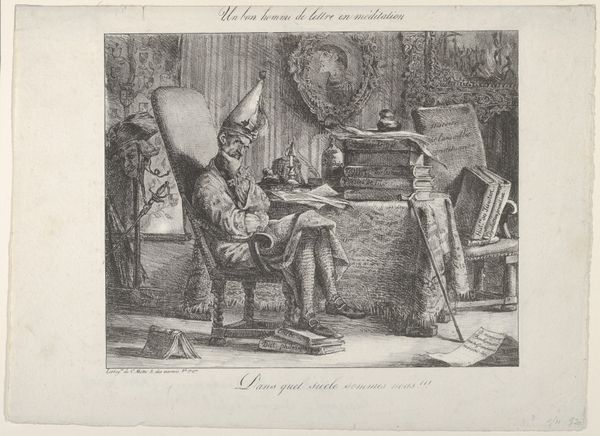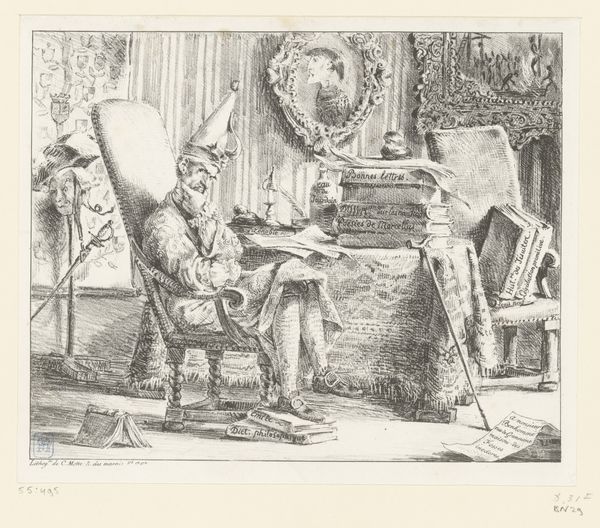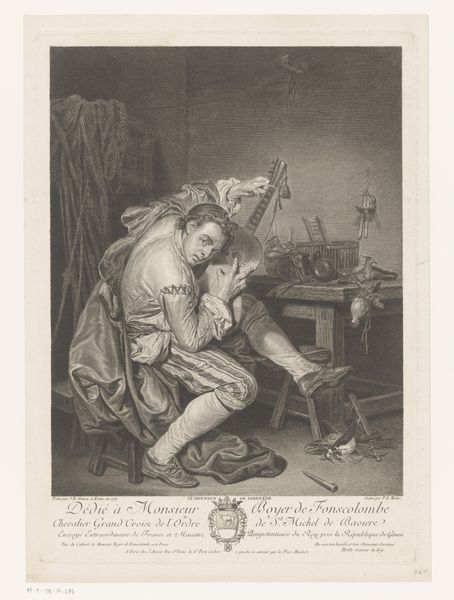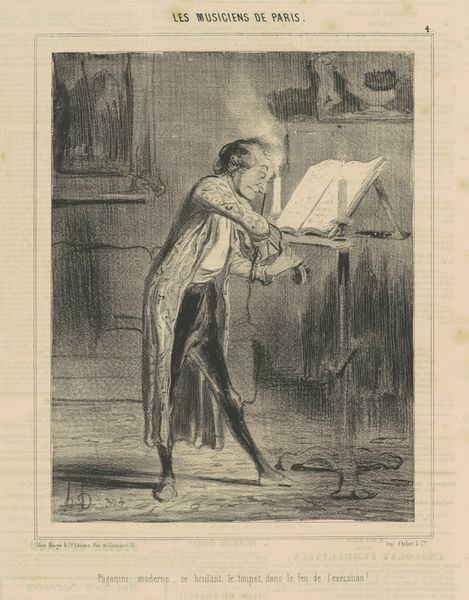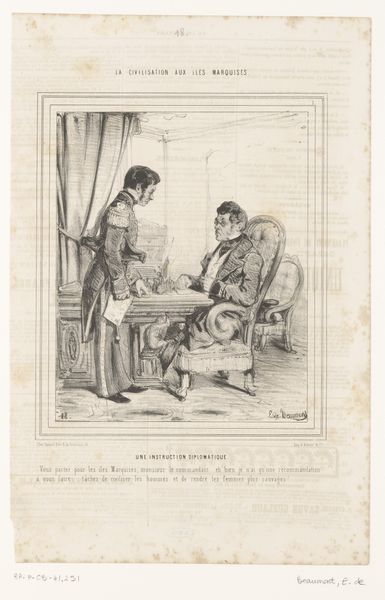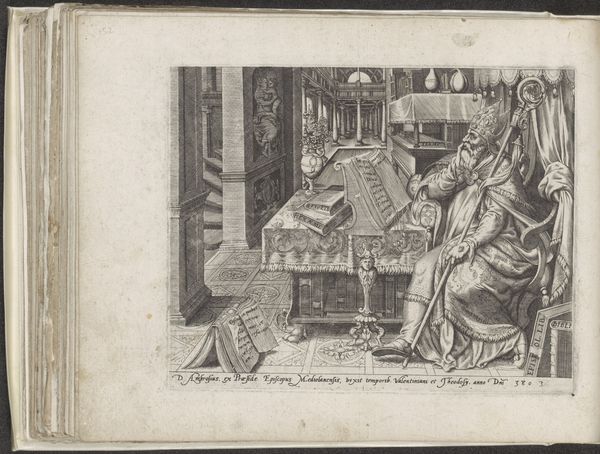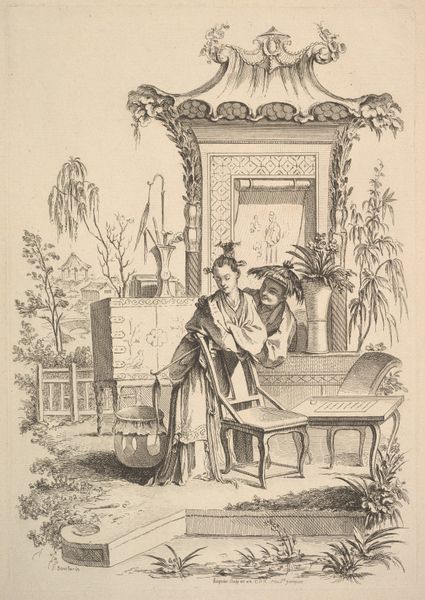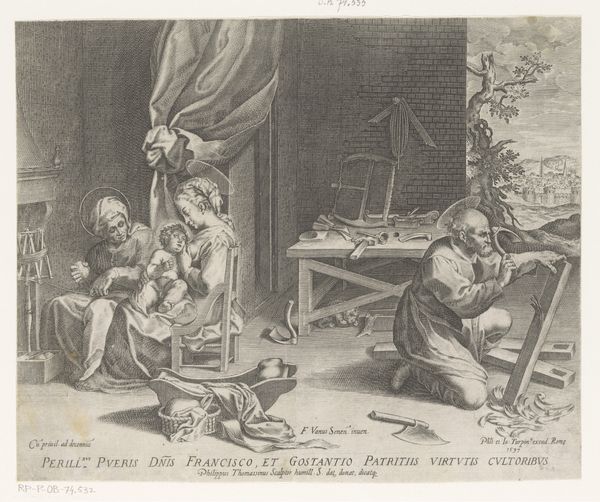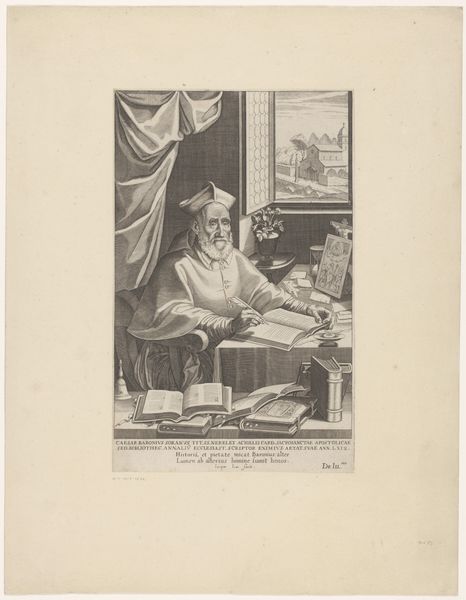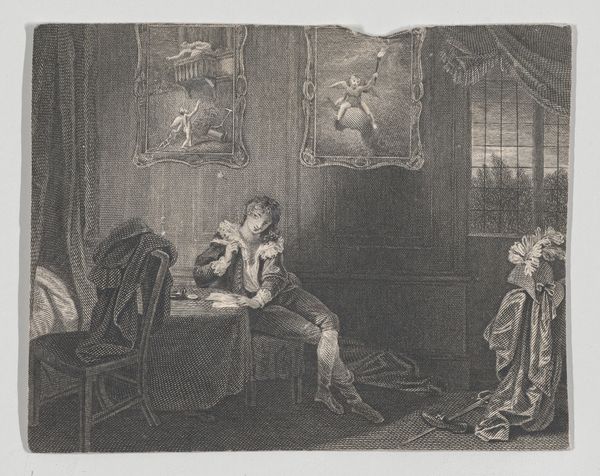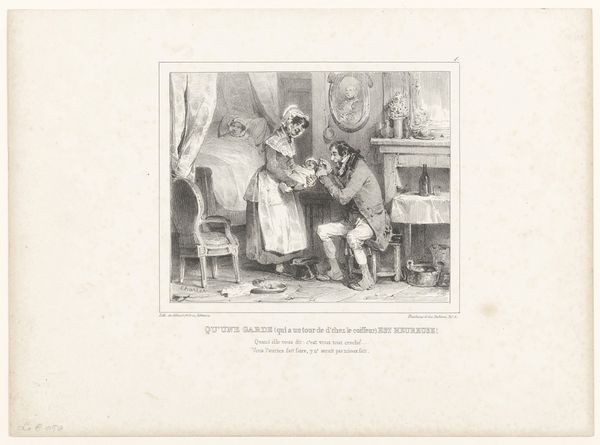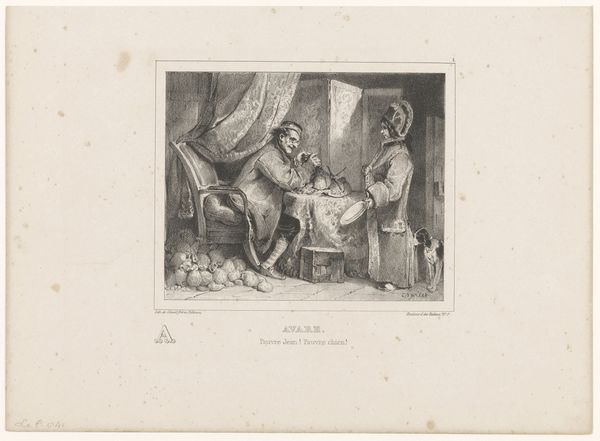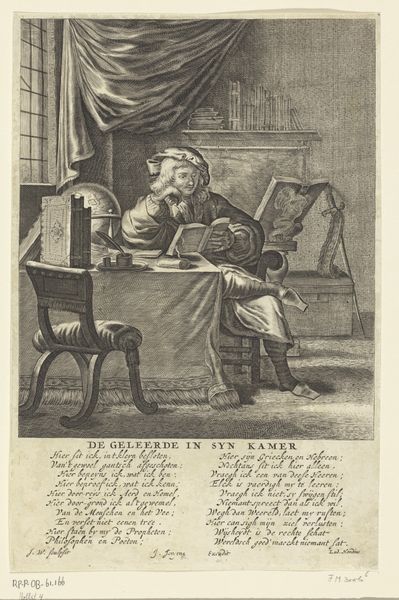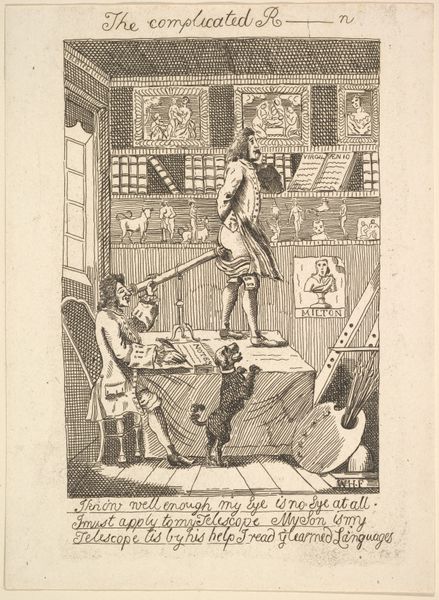
drawing, print
#
portrait
#
drawing
# print
#
book
#
romanticism
#
men
#
genre-painting
Dimensions: Image: 8 1/4 x 7 1/16 in. (21 x 18 cm) Sheet: 12 1/8 x 8 7/8 in. (30.8 x 22.6 cm)
Copyright: Public Domain
Curator: Eugène Delacroix's "A Literary Fellow Meditating," created in 1821, is a print that depicts a rather disgruntled-looking scholar amidst a chaotic scene of books and papers. My initial reading focuses on its status as a lithograph; the material process speaks to the accessibility of image-making in the early 19th century. Editor: Ah, the disgruntled scholar! He practically vibrates with a profound boredom. I bet he's just realized he’s out of coffee, or maybe he has an unfortunate epiphany about the absurdity of footnotes! Seriously though, that pointy hat – where does one even get one of those? It adds a beautiful comic undertone that undermines any possible gravitas that he would wish for! Curator: Indeed, Delacroix utilizes lithography to great effect, employing precise linework to construct both character and setting. We need to consider the economics and technology of printmaking to better understand who had access to these images and what role they played in shaping the consumption of art. Editor: Absolutely! And I love that little sword poking out from behind his armchair – or is it a prop from a stage? It makes me wonder what secret heroic fantasies that dear man harbors… Perhaps he pictures himself as Don Quixote in between correcting galley proofs of an endless encyclopedia, stuck in an administrative purgatory. Curator: The texts littering the foreground of the drawing are also incredibly interesting, the large book to the left entitled, Histoire de l'Assemblée constituante. These kinds of political texts illustrate the socio-political tensions in post-revolutionary France at the time this image was circulated, emphasizing the burden on individuals such as him. Editor: It’s tempting to interpret those mountains of books as metaphorical commentary, as literal blocks, he's overwhelmed. Delacroix has captured the exhaustion of intellectual labor perfectly. He also understood something so beautifully simple, and the way our surroundings mirror and mold our emotions. Curator: Thinking about this piece within Delacroix’s broader trajectory really does open avenues for interpreting this lithograph within its specific political climate of early 19th century France and his views of knowledge distribution through accessible prints like this. Editor: I like ending with this charming, slightly snarky portrait of ennui— it’s a reminder that even brilliance can be a little weary sometimes.
Comments
No comments
Be the first to comment and join the conversation on the ultimate creative platform.
